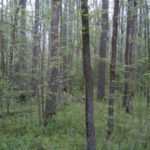Firewood tips to contain nonnative critters
Perhaps the only thing better than sitting around a campfire at the end of a summer’s day might is sitting in front of a fireplace with a roaring fire on a cold winter’s night. As cold winter temperatures settle across the country and many people cozy up next to their warm fires, experts warn that owners of wood-burning fireplaces to take care when choosing wood and firewood should be bought locally.
Firewood transported in from different areas has been a key factor to the introduction of nonnative pathogens and insects that harm ecosystems.
Sudden Oak Death, in California, and Emerald Ash Bore, in the east, are examples of nonnative pathogens and insects destroy thousands of native trees. A new threat I just learned about is the Gold-spotted oak borer which has killed an estimated 22,000 trees in the Cleveland National Forest (CA) and surrounding areas. The serious damage to the ecosystems, primarily reducing habitat for wildlife, by nonnative invaders is amazing.
Frankly, containment is the best hope to prevent new infestations.
Here are some firewood tips that will help in the containment efforts:
— Wood found at a campground should stay at the campground.
— Don’t move wood to different locales. It may look pest-free, but may have critters under the bark.
— Don’t transport wood more than 50 miles from its source.
— If you do move wood more than 50 miles, burn it immediately







